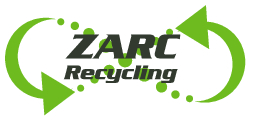Household Electronics Recycling
E-Waste or electronic waste, simply refers to electronic devices that are thrown out or recycled. However, behind this simple term is a complex global problem: What exactly should we do with old electronics? They take an immense amount of energy and resources to create, and the materials used mean that they can’t be safely put into a landfill like many other types of waste.
All this leads to e-waste challenges – challenges many electronics users aren’t aware. To help put these issues into perspective, let’s take a look at the key facts behind e-waste that everyone should know (and some excellent reasons that everyone should try to recycle).
E-Waste accounts for around 70% of toxic waste. This is a problem, because currently methods of dealing with e-waste fall far behind the amount of waste being produced. Much e-waste is still sent to incinerators or landfills, for example, where it’s typically burnt or melted down. This is far from an ideal solution for toxic waste – in fact, it can make problems even worse, due to what e-waste contains.
E-Waste contains many toxic materials, including mercury, lead, arsenic, and cadmium. Many different metals and chemicals are used to create things like LCD screens, computer chips, and other materials that we use in so many electronic devices. Many of these materials are toxic, and when e-waste is improperly disposed of, they can leak into the environment and cause long-term problems. Lead is one of the biggest culprits, and can cause neurological damage in humans exposed to high amounts in the environment. Burning e-waste tends to release toxic particles into the air, where they settle in the surrounding landscape or are breathed in by nearby people.



Do your part to help with protecting the environment and recycle your e-waste responsibly. Below are list of electronics Zarc accepts for recycling broken out by items we pay for, items we charge, and items taken in for free.
Electronics We Pay For (call for pricing)
- • Electric Wires
- • Modems/Routers/Switches
- • Circuit Boards
- • PC/Server Boards
- • Power Boards
- • RAM Memory
- • Graphics Card
- • Power Supply
- • UPS Battery Units
- • Computer Power Supply
Electronics We Charge (call for pricing)
- • Keyboards/Mouse
- • Stereo
- • Printers
- • Fax Machine
- • Speakers
- • VCR/DVD Players
- • Game Consoles/Media
- • Electronic Toys
- • Tablets
- • Cameras
- • Other Small Household Devices
Other Electronics We Charge (varies depending on item)
- • Keyboards/Mouse
- • Stereo
- • Printers
- • Fax Machine
- • Speakers
- • VCR/DVD Players
- • Game Consoles/Media
- • Electronic Toys
- • Cameras
- • Other Small Household Devices
- • Akaline Batteries
- • Rechargeable Battteries
Electronics We Take For Free
- • Television (except rear projection TV, which we charge *
- • Monitors *
- • Ballasts (non-PCB)
Items We DO NOT Accept
- • Light Bulbs
- • Vacuum Cleaners
- • Oil
- • Paint
- • Wooden Furniture
- • Clothing
- • Mattress
- • Garbage
- • Computers with hard drive - must take hard drive out first before we can take the PC
- • Laptops with hard drive - must take hard drive out first before we can take the laptop
- • Cell Phones
- • Tablets
